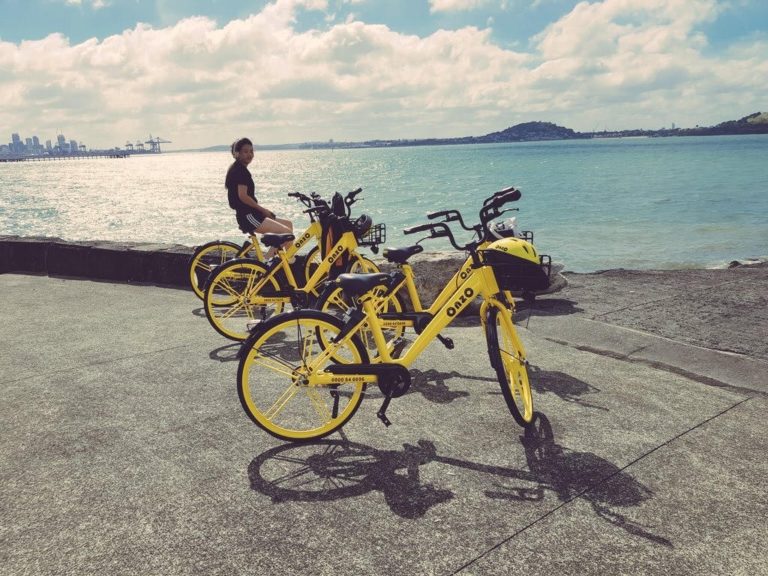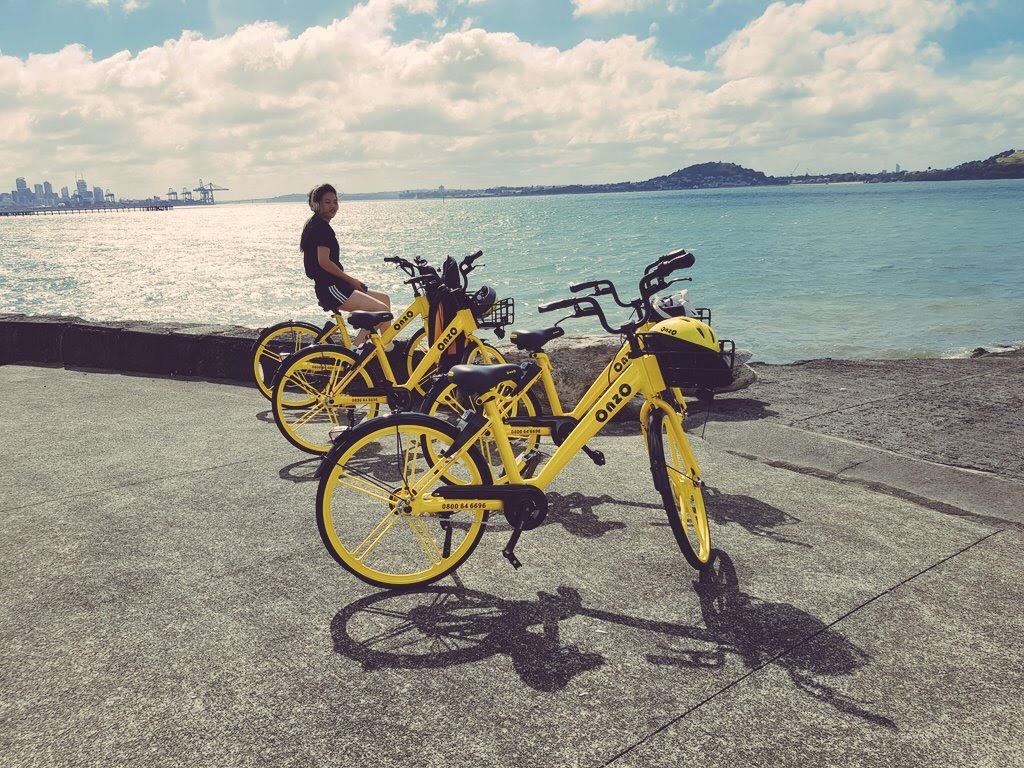Seen fresh, bright bursts of kowhai rolling around in Auckland or Wellington? It’s the new-look Onzo fleet, with some welcome upgrades to keep up to speed with our changing streets. Our intrepid correspondent Sam Finnemore takes a look at what’s changed…
Time moves fast and active transport moves faster! Hard to believe it’s less than two years since Onzo launched its dockless bikeshare service in Auckland, to mixed excitement and controversy. We aired our thoughts at the time, as did others. Overall, the bikes got a green light from users (albeit the small size was a bit of an issue for taller riders) and from Auckland Council (after some initial consent wobbles).
Onzos have since become a largely accepted part of the local landscape in Tamaki Makaurau (and some have made it further afield…and now in the capital, too, after a Wellington launch late last year.
Keeping Wellington weird pic.twitter.com/r3h1rG9lS0
— Patrick Morgan (@patrickmorgan) February 2, 2019
Anyway, you may not have heard much about Onzo for a while, and since the end of last year they’ve had a very high-profile competitor, in the form of Lime e-scooters. The novelty and convenience of zip-along riding with no pedals (and no helmets) has grabbed a lot of attention – and headlines. By comparison, Aotearoa’s original dockless disruptor feels positively established, but a year is a long time in startup-land.
So it’s been a mostly quiet launch for Onzo 2.0, unless you’re looking right at one, because the new look is loud and proud. The old bikes were black with yellow highlights, great for early nineties Batman devotees – but from a distance they tended to get lost in the streetscape, and the matte finish looked almost pre-rattlecanned. Now they’ve got a sunnier disposition, in bright gloss yellow which stands out nicely on the street when you’re hunting for the bike you spotted on the app.
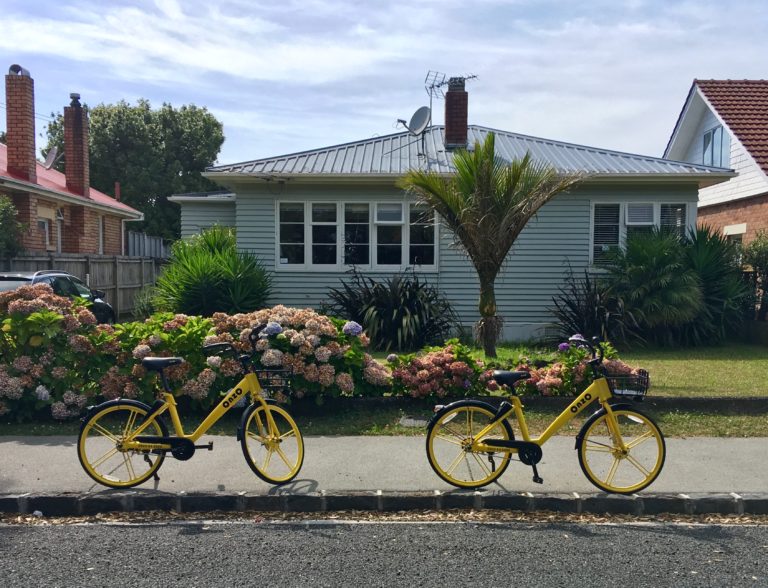
Up close, everything feels… nicer. Things have been smoothed and rounded off a bit, even the handlebar stem. Look over a new Onzo before setting out and you’ll notice added metal in key spots to add strength and reduce damage – including protective shrouds for the brake levers which tended to get spun round or snapped off on the old bikes.

One of the neatest original Onzo features – the front basket, with integrated solar panel to power the GPS lock – has been made even better, with stouter metal and a deeper design to hold bags and shopping more securely. It’s still only rated for five kilograms, but it should hold up better than the previous version, which Onzo tell us was their single biggest maintenance issue. And the higher basket rails will hopefully make doubling a human companion a less comfortable proposition!
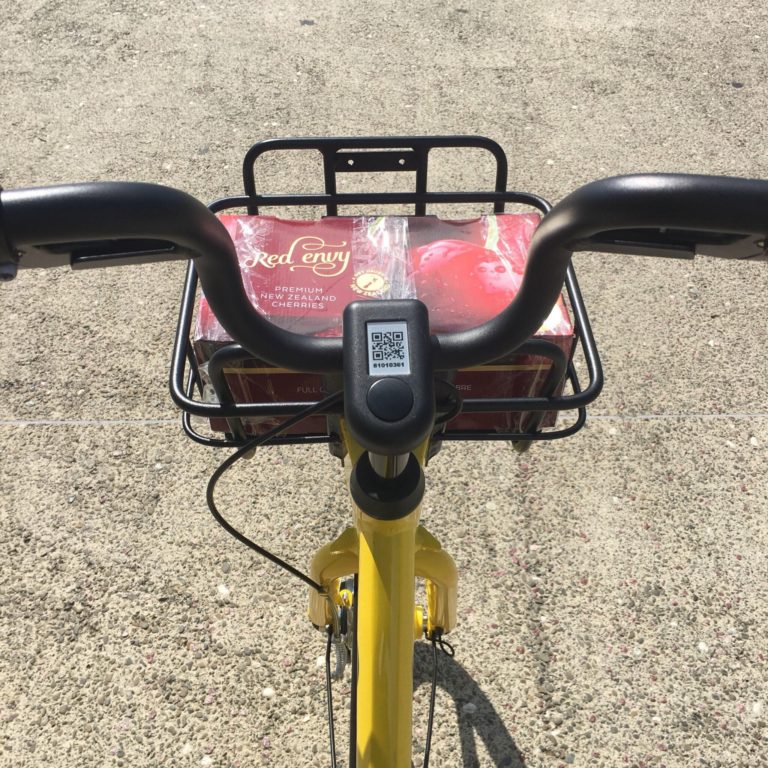
The loudest and most frequent complaint raised by Onzo adopters has been size. The original bikes had a petite frame not well suited to riders over five feet tall, which left taller folk at a bit of a loss. Not anymore: the new bikes are upsized to cover a recommended height range between 155 and 180 centimetres, right across the average height for New Zealand adults. There’s a height scale marked on the seat post, and the whole setup is controlled by a wide, flat push-pull handle, replacing the fiddly quick release of old.
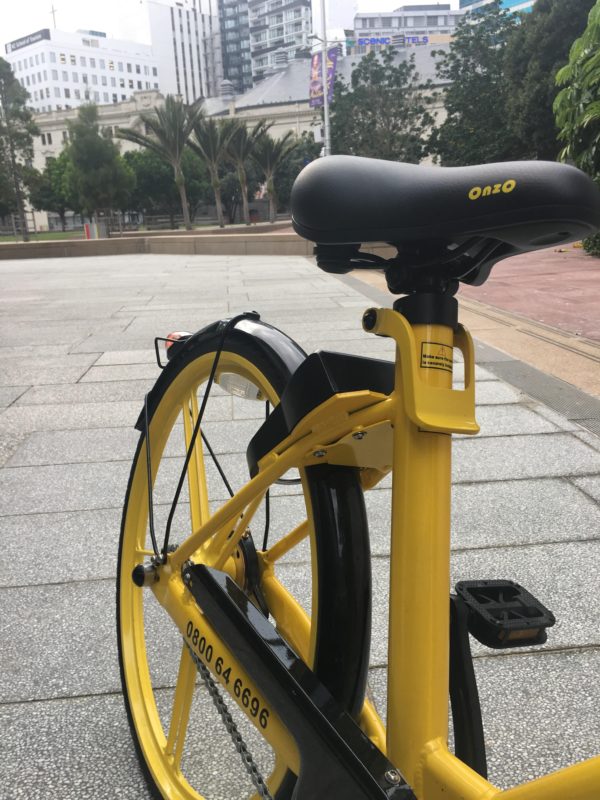
Bigger frames mean bigger (and better) wheels too, and these are the other big visual upgrade. Where the old bikes featured wire spoke wheels with 24-inch diameter – a size usually seen on bikes for junior riders – the new versions are cast metal five-spoke jobs that look downright racy, and get a boost up to 26 inches.
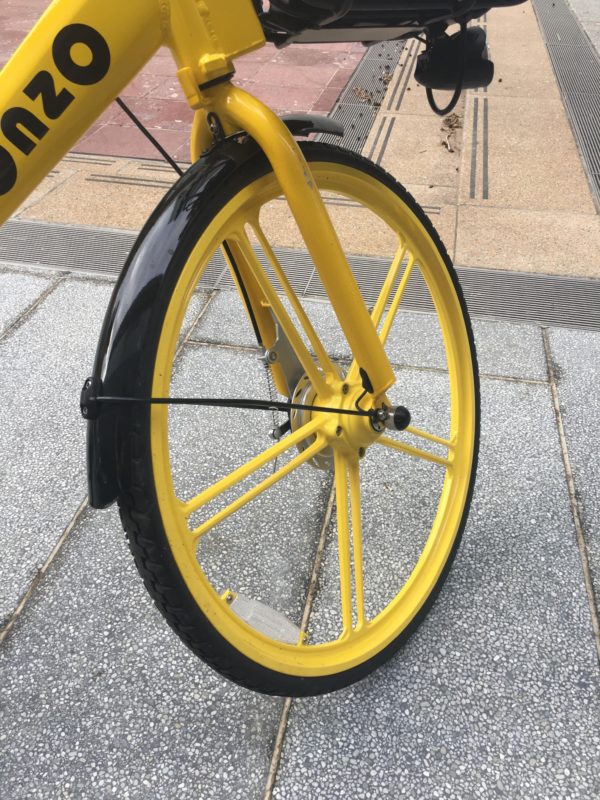
The more generous size really transforms the riding experience. With your knees no longer up around your ears, it’s easier to comfortably spin the single-speed crank and feed power to the pavement. You can cover ground more quickly and maintain speed better uphill, where e-scooters strangely seem to run out of puff – and on the flat you’ll be able to comfortably noodle along at just above walking pace.
Despite the solid tyres (no flats!), those bigger hoops also take away far more of the bumps and shudders that the original Onzos used to transmit faithfully through your arms into your jaw (the kind of bumps that can buck you off altogether on the smaller-wheeled varieties of e-scooter).
Safety gets a boost too. When Onzo launched, one of the first things people noticed was the lack of lights and reflectors. Battery units were quickly added, but they wandered off many bikes just as quickly. Now there’s a big, beautiful headlight mounted under the basket, driven off a dynamo built into the front hub. At the back, there’s a red lamp on the mudguard that features its own mini solar panel for power, and a sensor to automatically flick it on in low light conditions.
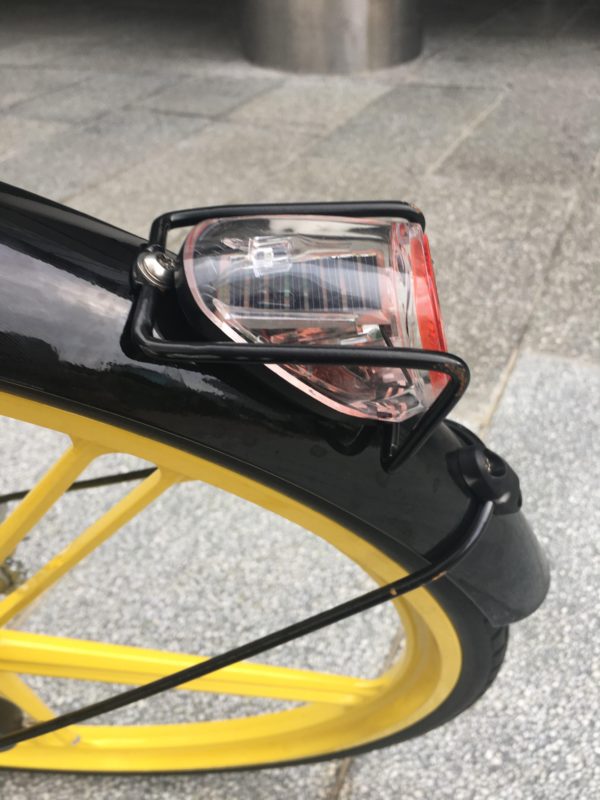
Helmets are the same as ever, and still serviceable – but the issue remains finding an Onzo with a helmet attached in the first place. The rear lock has a sticker asking riders to loop the helmet inside when they lock for security, but it doesn’t seem frequently used. Maybe soon we’ll see an upgraded helmet to match the bike, with a metal tab for locking – or perhaps Onzo could take a leaf out of Lime’s book, and require users to take a photo confirming they’ve parked it properly, with helmet visibly attached.
It all adds up to an Onzo experience that’s both more fun, and far more practical day-to-day.
I couldn’t resist trying it out and showing off the new look when picking up fresh produce at Viaduct Harbour, and it’s still a perfect choice for relaxed trips along Quay Street, Tamaki Drive or getting off your bus or train a stop earlier on a sunny day.
But the first real test was a midweek moment of panic, running late to pick up my car from a workshop on Great North Road after finishing up work downtown. I told myself I should have set off half an hour earlier – but I needn’t have worried. A short trip up the Nelson Street cycleway was smooth and easy, and a lot easier on the steeper inclines than Onzos of old. I only felt tempted to stand up on the pegs once or twice (although this still tests the relaxed Onzo handlebar layout).
On the flat, I was comfortably clocking 20 kays an hour or better, and wound up the trip at just under twenty minutes for a distance of three and a half kilometres – and all for the princely sum of 50 cents. If I’d picked a Lime (and pushed it uphill to Victoria Street), that’d be a $7 trip. Just saying.
In fact, that’s the best thing that hasn’t changed about Onzo. It’s still remarkably cheap, and a faster ride means it’s better value than ever when you’re paying by the quarter hour, not counting the generally nicer experience overall. It feels like a serious transport option, despite not taking itself seriously – and it’s much better able to support the useful everyday riding that more people are choosing to do. Hopefully we’ll get better as a city at gearing up to support that growth, including the safe streets and routes that everyone in Auckland deserves to have access to. And more bike parking, everywhere.
The 2.0 bikes are here to stay for a while, with four hundred in the initial launch batch and another thousand in the wings. Onzo will keep looking for tweaks in response to user feedback, but a 3.0 version is still a while off – although they made tantalizing mention of gears or even (gasp) electric power.
Speaking of which, Onzo is still going ahead with plans to launch a e-scooter fleet in parallel. Eagle-eyed users will have spotted that the app already features a (currently superfluous) “lock scooter” button showing! The Onzo team is confident that people will be able to easily split the difference between each mode’s advantages and drawbacks.

And what of the old Onzos, which went so far and accomplished so much? They’re being gradually retired out of the fleet as they become more difficult to maintain, but you’ll be able to spot the occasional OG black bike around for some time yet. Onzo is working on plans to upcycle any remaining parts or whole bikes for good causes, although the plans are still under wraps for now. They’ve actually made a start with five refurbished bikes sent to Kolovai in Tonga, as a starting fleet for a new community library – and shared bikes and shared books are a great combination if ever we heard one. Roll on!
–Sam Finnemore
Thanks to the team at Onzo for answering our questions – also to Amanda Saxton at Stuff for her great story last month on the Onzo evolution, and to Twitter user @realtimsin for permission to use the gorgeous header photo. In fact, it’s so nice, we’ll use it twice.
